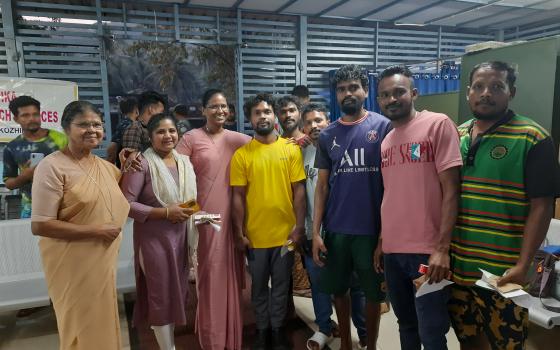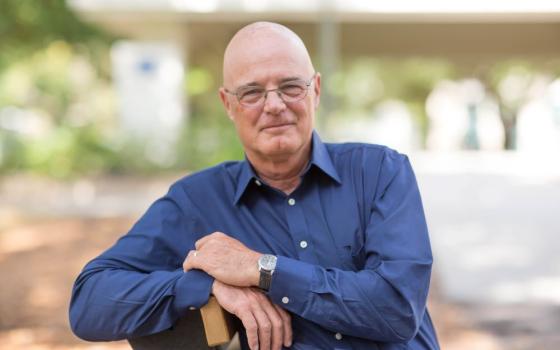A statue or painting of Mary in which she is depicted with dark or black skin, the Black Madonna images are among the oldest Madonna images in the  world.
world.
In Sue Monk Kidd’s best-selling novel The Secret Life of Bees, an image of the Black Madonna adorns honey jars and becomes almost a major character. China Galland’s 1991 novel, Longing for Darkness, describes a pilgrimage in search of the same figure.
The blackness of the images is purportedly not related to race or ethnic origins but has to do with symbolic meanings and connections to early goddesses.
An image that belongs more to ordinary Catholic people than to the institutional church, Black Madonna shrines are found mostly in southern Europe, such as at the Abbey of Montserrat near Barcelona in Spain, though notable ones are also located in Poland and Switzerland.
"The shrines and images of the Black Virgin have an undeniable spiritual power, which explains their attraction for tourists, as well as those seeking a cure for their ills," writes Ralph Metzner. "The chapel in Altötting, in the lush, fertile farm country of Lower Bavaria, stands in the middle of the town square, surrounded by other churches and monasteries. The outside of the chapel is covered with thousands of votive tablets. The entire inside of the chapel is painted black, and the walls studded with countless gold and silver images and ornaments, especially around the alcove shrine which holds the statue. The light from numerous candles in gigantic silver candleholders sparkles and scintillates off the polished gold and silver objects. The blackness set with shimmering gold and silver gives the whole chapel a mysterious yet strangely comforting aura."
Canadian Jungian analyst Marion Woodman brought this archetype of the feminine divine to the attention of psychology circles in her popular books Addiction to Perfection and The Pregnant Virgin.
Scholar of mysticism Andrew Harvey describes the Madonna’s dark aspect as “the blackness of divine mystery celebrated by the great mystics who see the divine as forever unknowable, mysterious, beyond all our concepts, hidden from all our senses in a light so dazzling it registers on them as darkness.”
The Black Madonna is also the Queen of Nature, the agent of all fertile transformation in the outside world and in the psyche. She urgently demands a return to balance and wholeness, honoring the earth and representing ecology and environmental concerns, according to theologian Matthew Fox. “Her return is a sign of our times.”
In Austria in the 1950s artist (and then Benedictine sister) Meinrad Craighead saw a poster of a black-skinned Virgin Mary. “Little by little I learned about her. In Catholicism she is the Sorrowful Mother, Mater Dolorosa, the Madonna of Solitude and Sorrow, who can receive and contain even our most unbearable pain. My love of monasticism began as a marvel at the Catholic art that depicted her,” said the artist.
Craighead found a family connection. Her namesake Meinrad Eügster lived in the Swiss monastery of Einsiedeln, where a Black Madonna shrine exists.

“Throughout Europe and Mexico, images of [the Black Madonna] are enshrined in countless pilgrim churches, in remote monasteries, in tiny chapels and vast cathedrals, down in dark crypts and up on high altars. She has been visited by millions for hundreds of years. She is the lodestone, always pulling us into her mystery,” Craighead said.
“On her face is an expression of utter solitude so intense that the child on her knees or in the embrace of her left arm seems strangely appended. Her eyes are opaque, blank, veiled in the deepest interiority. She sits deeply, a curtained container, a tabernacle, the eternal bloody cave of birth, disintegration and rebirth.”
Craighead saw a connection between this Madonna and the Native American Hopi spirit, Crow Mother, another face the feminine divine wears, who both cares and challenges. Craighead has lived and worked in the southwestern United States since she left the European Benedictines in the 1970s.
“She is Crow, black as the night sky and the richest soil, dark as the  miracle of deeply watered earth in the arid Southwest. She is the mother who fertilizes all life. She visits Hopi villages to initiate the young in the predawn winter darkness. She is the Keeper of the Balance.”
miracle of deeply watered earth in the arid Southwest. She is the mother who fertilizes all life. She visits Hopi villages to initiate the young in the predawn winter darkness. She is the Keeper of the Balance.”
Crow Mother comes from the spirituality of the Earth as does the Black Madonna.
With contemporary lore about black holes at the center of our galaxy and elementary particles burbling into existence out of nothing, Craighead said, “science now shows us pragmatically what people in both the Old World and the New have probably always known forever, with their deep hunches about our origins. Black is holy. It’s the mysteries of the night sky. We both come from and are contained somehow by this darkness.”



